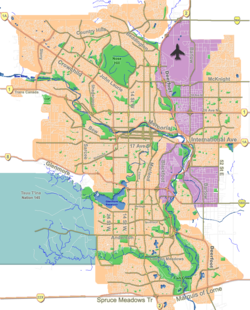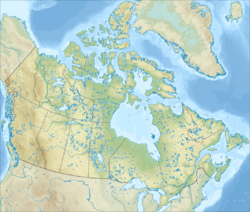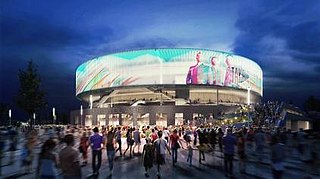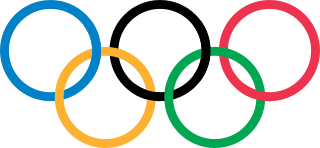| Location | Calgary, Alberta |
|---|---|
| Coordinates | 51°02′49″N114°06′21″W / 51.04694°N 114.10583°W Coordinates: 51°02′49″N114°06′21″W / 51.04694°N 114.10583°W |
| Public transit | Calgary Transit Sunalta LRT station |
| Owner | City of Calgary (Proposed) |
| Operator | Calgary Sports and Entertainment Corporation N. Murray Edwards Alvin Libin Allan Markin Jeffrey McCaig Clay Riddell Byron Seaman |
| Capacity | 19,000 (Events Centre; Projected) 41,000 (Stadium; Projected) |
| Construction | |
| Construction cost | $890 million (Projected as of August 2015) [1] $1.8 billion (Projected as of April 2016) [2] |
| Tenants | |
| Proposed: Calgary Flames (NHL) (Events Centre) Calgary Hitmen (WHL) (Events Centre) Calgary Roughnecks (NLL) (Events Centre) Calgary Stampeders (CFL) (Stadium) | |
CalgaryNEXT is a proposed private-public multi-purpose 365-day-a-year sports complex [1] to be built in Calgary, Alberta, Canada. It would replace the Scotiabank Saddledome (one of the oldest arenas in the NHL) and McMahon Stadium for Calgary's professional hockey and Canadian football teams.
A sports complex is a group of sports facilities. For example, there are track and field stadiums, football stadiums, baseball stadiums, swimming pools, and Indoor arenas. This area is a sports complex, for fitness. Olympic Park is also a kind of sports complex.

Calgary is a city in the Canadian province of Alberta. It is situated at the confluence of the Bow River and the Elbow River in the south of the province, in an area of foothills and prairie, about 80 km (50 mi) east of the front ranges of the Canadian Rockies. The city anchors the south end of what Statistics Canada defines as the "Calgary–Edmonton Corridor".

Alberta is a western province of Canada. With an estimated population of 4,067,175 as of 2016 census, it is Canada's fourth most populous province and the most populous of Canada's three prairie provinces. Its area is about 660,000 square kilometres (250,000 sq mi). Alberta and its neighbour Saskatchewan were districts of the Northwest Territories until they were established as provinces on September 1, 1905. The premier has been Rachel Notley since May 2015.
Contents
- Private-public partnership
- Facilities
- Events Centre
- Fieldhouse and stadium
- Financing
- Community Revitalization Levy, Tax Incremental Financing
- Ticket surcharge
- Timeline
- Debate
- Proposed location
- Creosote-contamination site
- Floodplain concerns
- References
The proposal includes two buildings: a 19,000–20,000 seat events centre [1] that would serve as the home arena of two hockey clubs, the National Hockey League's Calgary Flames, and the Calgary Hitmen of the Western Hockey League, [3] as well as the Calgary Roughnecks lacrosse team; and a 30,000-seat football stadium and fieldhouse [1] that would be the home of the Canadian Football League's Calgary Stampeders and serve as a public training and activity space. The complex, to be located in the West Village along the Bow River [1] [4] for the "hub of pro and amateur sporting activity." [1]

The National Hockey League is a professional ice hockey league in North America, currently comprising 31 teams: 24 in the United States and 7 in Canada. The NHL is considered to be the premier professional ice hockey league in the world, and one of the major professional sports leagues in the United States and Canada. The Stanley Cup, the oldest professional sports trophy in North America, is awarded annually to the league playoff champion at the end of each season.

The Calgary Flames are a professional ice hockey team based in Calgary, Alberta. They are members of the Pacific Division of the Western Conference of the National Hockey League (NHL). The club is the third major-professional ice hockey team to represent the city of Calgary, following the Calgary Tigers (1921–1927) and Calgary Cowboys (1975–1977). The Flames are one of two NHL franchises in Alberta; the other is the Edmonton Oilers. The cities' proximity has led to a rivalry known as the "Battle of Alberta".

The Calgary Hitmen are a major junior ice hockey team based in Calgary, Alberta, Canada. The Hitmen play in the Central Division of the Western Hockey League (WHL). They play their home games at the Scotiabank Saddledome. Bret "The Hitman" Hart, a local-born professional wrestler, was a founding owner as well as the inspiration for the team's name. Established in 1994, the team has been owned by the Calgary Flames hockey club since 1997. They are the third WHL team to represent Calgary, preceded by the Centennials and Wranglers.
Immediate reaction to the proposal from local politicians was mixed; they supported the plan to redevelop the West Village area, but many – including Mayor Naheed Nenshi – expressed concern at the proposal, [5] which would potentially have the city initially fund between $440 and $690 million of the projected cost which promoters claim will be recouped over a long period of time. As part of the proposal, the city would own the facilities and be managed by the privately owned Calgary Sports and Entertainment Corporation (CSEC) - thus exempting the land from property taxes - but would not receive any share of the profits.

Naheed Kurban Nenshi is a Canadian politician who is the 36th mayor of Calgary, Alberta. He was elected in the 2010 municipal election with 39% of the vote, and is the first Muslim mayor of a large North American city. He was re-elected in 2013 with 74% of the vote. He was again re-elected in 2017 to a third term with 51% of the vote.
The Calgary Sports and Entertainment Corporation (CSEC) is a privately owned professional sports and entertainment company based in Calgary, Alberta, Canada formed in 2012 and owned by N. Murray Edwards, Alvin Libin, Allan Markin, Jeffrey McCaig, Clay Riddell and Byron Seaman.
Originally projected as costing $890 million, [1] [4] based on a City of Calgary report released April 2016 it was estimated that CalgaryNEXT would cost about $1.8 billion, with taxpayers paying up to two-thirds of the total. [2] [6]













